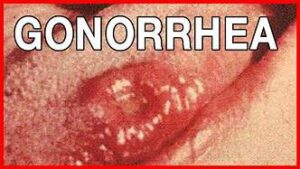What is Gonorrhea? Gonorrhea is a Sexually Transmitted Disease (STD) that is usually transmitted through sexual intercourse. A sexual intercourse may happen through anal, oral or vaginally. In the US alone gonorrhea is estimated to affect up to six hundred and fifty thousand people every year. Furthermore statistics reveal that women between fifteen and nineteen years and men between twenty and twenty-four years have the highest rate of infection.

What Is A Sexual Transmitted Disease
It is a Sexually Transmitted Disease (STD) or a Sexually Transmitted Infection (STI). Bacterium neisseria gonorrhoeae is to blame for this disgraceful STI. It can eat away the female cervix, fallopian tubes, uterus, mouth, throat, rectum and urethra. In men, this STD can infect their urethra, rectum, mouth and throat.
What Causes Gonorrhea
Gonorrhea is an infection caused by the bacterium Neisseria gonorrhoeae. It not only affects the reproductive tract, but can also affect the mucous membranes of the mouth, throat, eyes, and rectum.
The infection is transmitted through sexual contact with an infected person involving the penis, vagina, anus, or mouth. Men do not need to ejaculate to transmit or acquire gonorrhea.
Symptoms For Gonorrhea
Women gonorrhea symptoms
Bleeding after intercourse or strange vaginal bleeding
– Arthritic pain and fever
– Bloody discharge from the anus and pain during bowel movements
– Sore throat
Yellowish-greenish discharge from their genitals
– A burning sensation when urinating
– Pelvic or abdominal pain
– Vulva soreness/swelling
– Painful intercourse
–
In men gonorrhea symptoms can as well go undetected. Theirs will include:
Fever
– Bloody discharge from the anus and pain during bowel movements
– Sore throat
– A burning sensation during urination
– Sore or swollen testis
– Yellowish-white discharge from their penis
Treatment For Gonorrhea
An efficient hospital or STD testing center with rapid testing facilities can confirm the presence of Neisseria gonorhoeae within a few minutes. The bacteria are eliminated using a combination antibiotic regimen with a view to treating the infection. Sexual partners should also be identified and treated immediately to prevent further infections. Vaccinations against Hepatitis B and HPV and some counseling are also necessary, to prevent the likelihood of future infections.
Typically, gonorrheal testing is not painful but can be slightly discomforting. The clinician will require fluid samples from the infected areas, which may include the throat, cervix, urethra, pelvis or anus. This sample is taken using a cotton swab or sponge, although a urine test may also be needed for further verification. It is important to tell the doctor of previous sexual experiences no matter how seemingly embarrassing, in order for the exact causes to be identified and a treatment method established.
